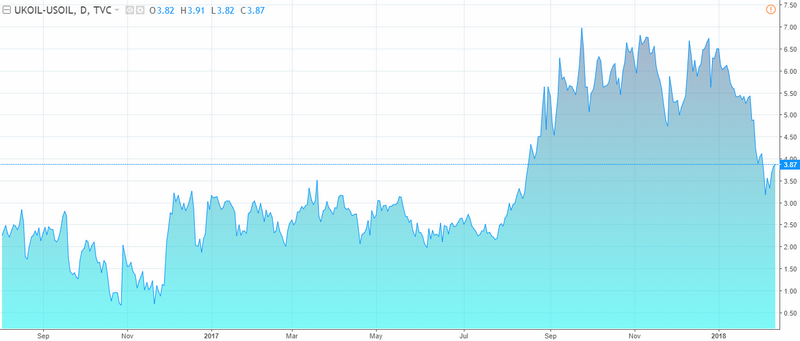
The oil market. Prospects and expectations! Anton Hanzenko.
Today we will consider the oil market in more detail. As of the beginning of 2018, namely February, the main brands of Brent and WTI remain near the mark of $ 68 and $ 64 per barrel, respectively. These levels are slightly higher than the high of April 2015, when oil quotes after a short correction resumed decline. Later, oil repeated the similar reduction model and updated the minimum at the beginning of 2016.
At the moment, oil is limited to levels of support of the end of January 2018 for WTI and the minimums of 2018 for Brent. At the same time, both brands of oil maintain a stable upward trend, which is traced from the end of June last year. Given the apparent slowdown of the upward trend in oil, the market remains in some uncertainty due to the assessment of this dynamics. So, at the moment, it looks like a correction inside the uptrend, which expands the trading range.
Looking back at the fundamental factors, data on oil production in the US in February 2018 crossed the mark of 10 million barrels per day. According to some forecasts for the year 2019, production in the US will reach the level of 11 million barrels per day. A slight impact on the rapid growth is due to the fact that oil exports from the United States are limited by an average of 1 million barrels per day. But the very fact of increasing production and the constant high level of oil reserves in the US keeps the risks for the growth of supply in the oil market.
The oil market remains optimistic due to the global growth in demand for oil, in particular, China and the agreement of OPEC and non-cartel countries to limit oil production. The arrangement is maintained despite the fulfillment of the objectives. At the same time, the participants in this agreement are likely to extend the duration of the pact to limit oil production, despite the fact that some members of OPEC are thinking about increasing oil production in the future.
The negative factor for the strengthening of oil is the absence of an explicit correction after a prolonged growth. This becomes especially acute when the fundamental factors do not provide such significant support as it was before, when oil grew on the actual supply reduction and demand growth. Also, do not forget about the seasonal decline in demand for fuel, which also can not affect the oil market.
The main difficulty in determining the prospects for oil at the moment is its significant dependence on fundamental factors, namely, the observance and extension of OPEC agreements, the rate of growth and consumption of oil in the US and the implementation of forecasts for the growth of world oil demand.
From a technical point of view, not everything is smooth either. February’s decline in oil prices is within the scope of correction of the uptrend. So, the Fibonacci levels of 23.6%, for WTI – 61.00 and for Brent – 65.00, are a significant support. The breakthrough of levels in the future can open the way to the level of Fibo. 38.2%, for WTI – 57.00-30 and for Brent – 61.00.
The second significant downward factor for oil remains the decreasing difference between the cost of Brent and WTI crude oil brands, which at the beginning of 2018 remains slightly above the highs of 2017. This indicates the growing popularity of American varieties of oil, the extraction of which is actively growing. Also, a decrease in this indicator indicates a decrease in the cost of oil.
As a result, the oil market remains on the verge of correction, the depth of which depends on many fundamental factors.
Anton Hanzenko


